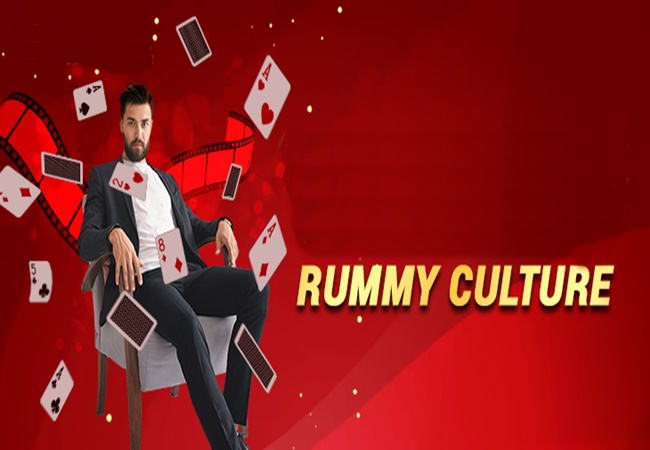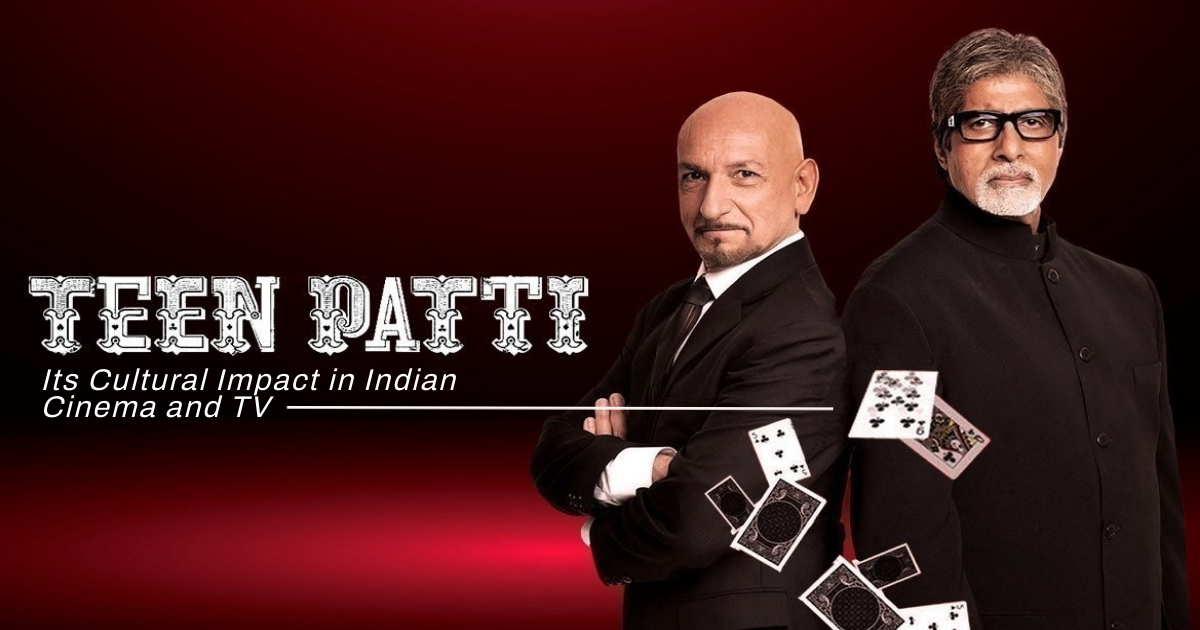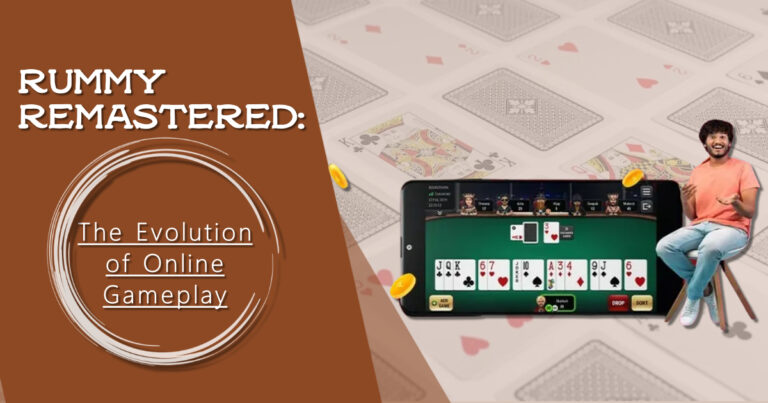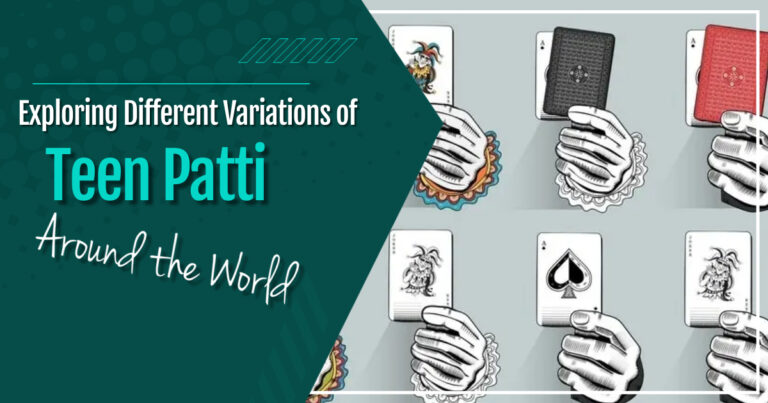Teen Patti: Its Cultural Impact in Indian Cinema and TV
Best Teen Patti, often referred to as “Three Cards” in English, is a popular Indian card game that has been a part of South Asian culture for centuries. With roots in the Indian subcontinent, the game is not just a pastime but a significant cultural phenomenon. The allure of Teen Patti lies in its blend of strategy, luck, and social interaction, making it a favorite in gatherings, especially during festivals like Diwali. As a result, its influence has permeated various aspects of popular culture, including movies and television shows. The depiction of Teen Patti and Rummy games in these mediums has not only reflected societal norms but has also shaped perceptions, contributed to storytelling, and even influenced the way the games are played.

Teen Patti in Movies: A Reflection of Society
In Indian cinema, Teen Patti has often been used as a narrative device to convey themes of risk, deception, and the allure of quick wealth, often featuring prominent Teen Patti stars. The game’s presence in films is more than a mere depiction of leisure; it often serves as a metaphor for the unpredictability of life and the moral choices people face. One of the most iconic representations of Teen Patti in Bollywood is in the movie Teen Patti (2010), starring Amitabh Bachchan and Ben Kingsley. The film revolves around a mathematics professor who discovers a formula to win at best Teen Patti and uses it to test the theory in real-world scenarios. As the game progresses, it unveils the darker aspects of human nature—greed, betrayal, and the consequences of obsession with wealth.
This portrayal of best Teen Patti is not an isolated case. In various movies, the game is shown as a backdrop for crucial plot developments. For instance, in the 1975 classic Sholay, Teen Patti is played in a tense scene where stakes are high, symbolizing the characters’ gambling with their lives and futures. Similarly, in Kaminey (2009), a high-stakes Teen Patti game sets the stage for the film’s exploration of ambition, rivalry, and the thin line between success and downfall.
Teen Patti’s cultural impact in cinema is also evident in its symbolic use. The game often represents the blurred lines between right and wrong, where the outcome is uncertain, and morality is tested. It reflects societal attitudes towards wealth and success, where the lure of easy money can lead individuals down perilous paths. By incorporating best Teen Patti into their narratives, filmmakers tap into a collective cultural consciousness, making the stories more relatable and engaging for the audience.
The Role of Best Teen Patti in Television Shows
While best Teen Patti has had a significant impact on films, its presence in television shows has been equally influential. Indian television, known for its family dramas and reality shows, often features Teen Patti as a recreational activity during festive episodes or as a plot device to introduce conflict and drama, highlighting interactions with an opponent in Teen Patti.
In many Indian TV serials, Teen Patti is depicted as a common household game played during festivals like Diwali, bringing together family members and highlighting interpersonal dynamics. The game is often used to reveal character traits—someone’s cunning nature, another’s naivety, or the underlying tension between relatives. For example, in popular shows like Yeh Rishta Kya Kehlata Hai and Kyunki Saas Bhi Kabhi Bahu Thi, Teen Patti games are depicted as part of the festive celebrations, where the interactions during the game help to further the storyline, revealing secrets or sparking new conflicts.
Reality TV has also embraced best Teen Patti, particularly in shows centered around games, competition, or celebrity culture. Shows like Bigg Boss have featured Teen Patti as part of their tasks, where contestants play the game for rewards or privileges. These depictions bring the game into a contemporary context, showcasing it as a social activity that transcends generations, appealing to both the young and old alike.
The portrayal of Teen Patti on television not only reinforces its cultural significance but also normalizes its presence in everyday life. By featuring the game in mainstream media, TV shows contribute to its continued popularity and relevance in modern Indian society. The game’s depiction in such accessible formats ensures that it remains a part of the cultural fabric, influencing how it is perceived and played, including in Teen Patti tournaments, across the country.

Teen Patti as a Cultural Symbol
The impact of Teen Patti in movies and TV shows extends beyond entertainment; it has become a cultural symbol that resonates with audiences on multiple levels. The game represents more than just a pastime; it is a reflection of the societal values, norms, and aspirations of the people who play it.
Teen Patti’s association with festivals, particularly Diwali, underscores its cultural importance. The game is often depicted in films and TV shows as an integral part of the Diwali celebration, symbolizing the joy of togetherness, the excitement of risk-taking, and the hope for prosperity in the coming year. This cultural connection ensures that best Teen Patti remains deeply embedded in the social rituals of Indian life, a tradition passed down through generations.
Moreover, Teen Patti’s portrayal in the media often reflects the evolving social landscape. In older films, the game was sometimes depicted as a vice, associated with gambling and moral decay. However, in more recent portrayals, there is a shift towards viewing best Teen Patti as a strategic game of skill, where success depends on intelligence, psychological insight, and social acumen. This shift mirrors the broader acceptance of games of skill in Indian society, where the line between gambling and legitimate competition is increasingly recognized.
Teen Patti’s role as a cultural symbol is also evident in its international appeal. With the growing popularity of Indian cinema and television globally, the game has found a place in the cultural lexicon of the Indian diaspora and beyond. In countries with large South Asian communities, best Teen Patti is often played during cultural festivals, and its depiction in media helps to reinforce cultural identity and continuity.
Conclusion
The cultural impact of best Teen Patti in movies and TV shows is a testament to the game’s enduring appeal and significance in Indian society. Through its depiction in these mediums, Teen Patti has evolved from a simple card game into a powerful cultural symbol in the world of Teen Patti, reflecting societal values, influencing perceptions, and shaping narratives. Whether as a metaphor for life’s uncertainties, a tool for character development, or a symbol of cultural continuity, Teen Patti continues to captivate audiences and maintain its place in the cultural imagination. As media continues to evolve, best Teen Patti’s presence in films and television shows will likely persist, ensuring that this quintessentially Indian game remains a vibrant part of popular culture.








